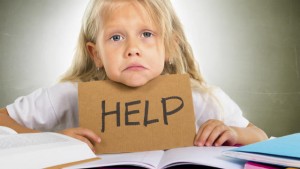Home » Commentary » Opinion » Why are school standards still falling?
· The Spectator
 Despite all the policy differences in the election, there was little to distinguish between the two major parties on the subject of increasing school funding. They only differ in the extent: the Coalition promised a large spending increase, and Labor promised an even larger one.
Despite all the policy differences in the election, there was little to distinguish between the two major parties on the subject of increasing school funding. They only differ in the extent: the Coalition promised a large spending increase, and Labor promised an even larger one.
But neither of those promises were based on evidence.
Australia’s results on international tests have been declining over the past 10 years ¾ both in absolute terms and in comparison to other countries ¾ despite continually increased school funding.
According to the Productivity Commission, per-student funding increased in real terms (above inflation) between 2007-08 and 2016-17 by over 14 per cent.
While non-government schools received a larger percentage increase (though coming off a much lower base), government schools still received an 11 per cent per student increase.
It’s been argued this was actually only a very small increase for government schools, because if teacher wages growth is taken into account then schools on average don’t actually have much more discretionary spending.
But this notion — that extra school funding spent on higher teacher salaries doesn’t actually count as extra school funding — fails the common sense test.
The reality is funding has increased for government schools. Some state governments have chosen to spend the extra money on higher teacher salaries. We can argue about the merits of this, but the fact remains that much more is being spent on government schooling than 10 years ago.
And this highlights an important fact that often gets missed in the funding debate: the states have the responsibility of running the government school systems.
State spending on government schools increased by only 3 per cent across 10 years, while federal spending on government schools went up by a whopping 93 per cent (albeit compared to a far lower funding starting point). If people are concerned that government schools are underfunded, they should be blaming state governments, not the federal government.
In any case, the OECD has concluded there are diminishing marginal returns to school funding. In other words, beyond a certain point there is no clear relationship between school spending and student outcomes.
Australia already spends more per student as a dollar amount than the OECD average — and several top-performing countries like Finland and Japan — after adjusting for purchasing power parity (taking into account cost differences between countries). There is very little evidence that further funding increases in Australia would substantially boost results.
But school funding in Australia can definitely be better allocated. And that doesn’t mean the simplistic attitude of ‘let’s take money from greedy non-government schools and give it to poor government schools’. Money for disadvantaged students should be allocated on the basis of evidence, not on the basis of school sector.
We’re often told government schools are below their ‘funding target’, but this doesn’t mean much ¾ because the current target is arbitrary and unreasonably high.
For example, the criteria for being a disadvantaged student is so broad that the majority of all Australian school students are classified as ‘disadvantaged’ and attract extra school funding. This isn’t evidence-based, but it is hugely expensive ¾ and means funding for disadvantage isn’t efficiently allocated to the schools that need it most.
The new government should commit to reviewing the funding formula.
And there are many ways to improve Australia’s school system that don’t require significantly more taxpayer money. For example, ensuring university teacher education degrees pass on evidence-based content would be a cost-effective approach to improving teaching.
The focus of the education policy debate must shift from how much money is spent to how it is spent.
Blaise Josephs is a research fellow at The Centre for Independent Studies and author of Overcoming the Odds: A study of Australia’s top-performing disadvantaged schools.
Why are school standards still falling?